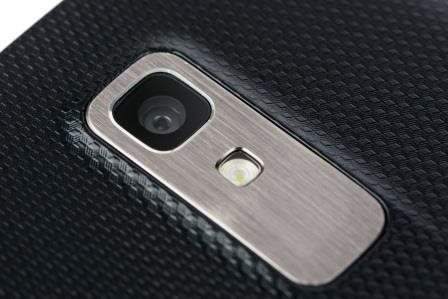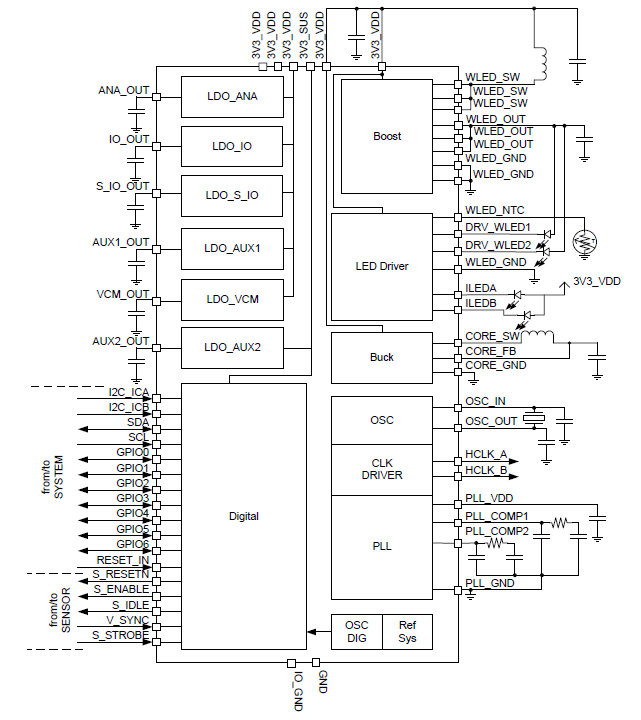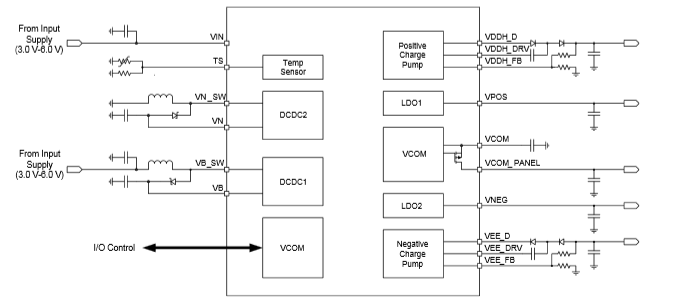SSZTAX4 september 2016 TPS65185 , TPS68470

If you think power-management integrated circuits (PMICs) only power a system’s processor, allow me to introduce the application-specific PMIC. Application-specific PMICs have the same great system benefits of a general-purpose PMIC – including system-cost reduction, space savings, power sequencing and platform scalability – but they are generally smaller devices designed for end-equipment systems. Additionally, application-specific PMICs have ultra-low leakage current to help preserve battery life in portable applications. In this post, I’ll describe two example applications for an application-specific PMIC.
Compact Camera Modules (CCM) for Dual-camera Applications
Current versions of portable electronics such as smartphones, tablets and notebooks now use two cameras: a “world-facing” camera and a “user-facing” camera. Integrating both cameras into end equipment such as smart phones, tablets, and detachable notebooks has created the need for an integrated and highly efficient power solution. An application-specific PMIC like the TPS68470 can power a compact camera module (CCM) in a dual-camera application: generating the clock for the image sensor, driving light-emitting diodes (LEDs) for camera flashes and various indicators, and incorporating LED drivers for privacy indicators.
Because camera-sensor modules are sensitive to local electrical noise, system designers must consider ways to reduce the noise. Camera PMICs integrate clean power rails to mitigate this noise. While a discrete power implementation would require that you design additional logic components onto the board, the PMIC has integrated power-sequencing components, resulting in a reduced solution size and less sequencing design effort.
Figure 1 shows a high-level block diagram for a PMIC that can power a dual-camera module.
 Figure 1 TPS68470 Block Diagram
Figure 1 TPS68470 Block DiagramElectronic Paper Display (EPD Applications
Electronic paper displays (EPDs) can display an image even without a power connection. EPDs are also incredibly thin (60µ), giving them an advantage in space-constrained applications. With these benefits, you can add displays to products with challenging power and space limitations.
E-ink works by moving positive and negatively charged microcapsules suspended in a clear solution when electric charge is applied. EPD applications require several output power rails such as a low-input supply for their display including ±15V.
Figure 2 is an application schematic for the TPS65185.
 Figure 2 TPS65185 Typical Application Schematic
Figure 2 TPS65185 Typical Application SchematicAn application-specific PMIC like the TPS65185 integrates necessary power rails into a single device to provide a highly efficient and space-saving solution for an EPD. The TPS65185 handles sequencing and is I2C-controlled to accommodate specific power requirements.
These are two examples of application-specific PMICs. PMICs are not just power solutions for powering your entire system. Application-specific PMICs help integrate a small number of power rails into a single IC to power a dedicated system block, while still giving the same great benefits of a general PMIC.
Additional Resources
- Ask questions about application-specific or general-purpose PMICs on the TI E2E™ Community PMIC forum.
- Find the right PMIC for your application